Mirrored from Sudopedia, the Free Sudoku Reference Guide
Hypersudoku
Contents |
Hypersudoku
Hypersudoku, Windoku, NRC-Sudoku, or Four-square Sudoku is one of the Sudoku Variations with additional constraints. This format was first introduced in the Dutch newspaper NRC Handelsblad by Peter Ritmeester and the first playable online version by Chris McCusker.
How to Play Hypersudoku
This game requires no mathematics skills. It is purely a logic game with the only prerequisite to be able to count to nine.
Hypersudoku Rules
The rules for playing hypersudoku are very simple.
1. All rows must have all the numbers from 1 - 9 in them (none can be repeated). There are 9 rows in the game.
2. All columns must have all the numbers from 1 - 9 in them (none can be repeated). There are 9 columns in the game.
3. All 3x3 squares must have all the numbers from 1 - 9 in them (none can be repeated). There are 13 squares in the game. There are the 9 underlaying 3x3 squares (divided by the dark blue lines) and the 4 overlaying (shown in light blue in the following diagrams).
Hypersudoku Logic
Hidden Constraints
Although there are only 4 additional constraints mentioned by the publisher, the position of these 4 windows indirectly creates 5 additional constraints. These are shown in the following picture.
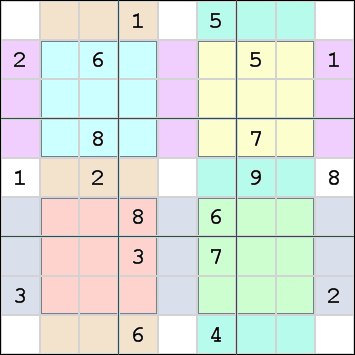
Solving Techniques
The solving techniques for a Windoku are similar to those of regular Sudoku. The extra constraints are placed in such a way that there are many more intersections to deal with. Each additional constraint can contain subsets and strong links which could be used in coloring techniques.
There are fewer Unique Rectangles in the grid, because not all 468 possible unique rectangles for a standard Sudoku are located in exactly 2 additional houses.
Minimum Number of Givens
Valid Windokus with 11 givens exist. However, it is not known whether this is the minimum number of givens. See this page for examples for such Windokus.
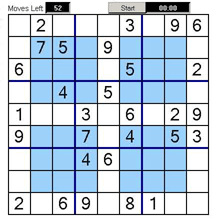 Figure
1
Figure
1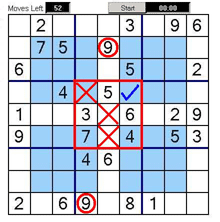 Figure 2
Figure 2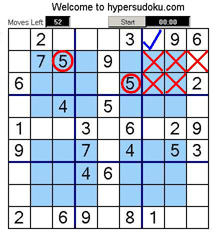 Figure
3
Figure
3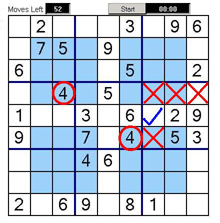 Figure
4
Figure
4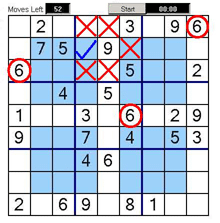 Figure
5
Figure
5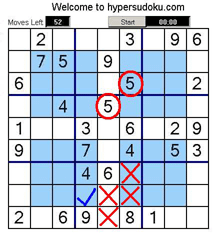 Figure
6
Figure
6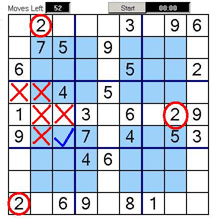 Figure
7
Figure
7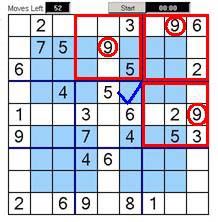 Figure
8
Figure
8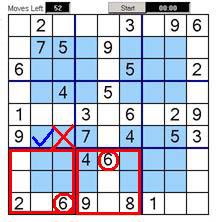 Figure
6
Figure
6